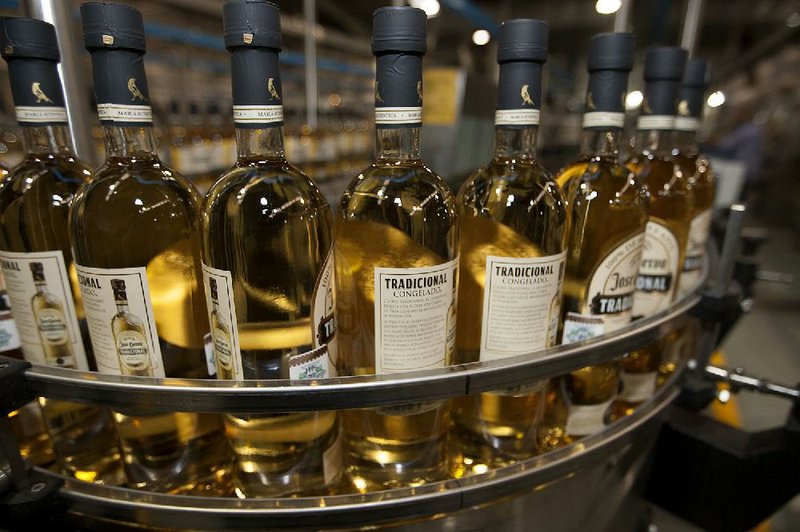MEXICO CITY - Mexico wants China to loosen up and have a little tequila. Actually, lots of it.
Since Chinese President Xi Jinping and Mexico’s Enrique Pena Nieto broke a diplomatic and economic chill and agreed to boost trade, tequila producers have been gearing up to make the world’s most populous country their second biggest market, after the margarita-loving United States.
The drink synonymous with Mexico already is available in more than 100 countries. But export of the alcoholic beverage to China has been limited by legal and sanitary restrictions.
Chinese authorities changed their rules last week, deciding that the purest and best tequila, known as blue agave, has no detrimental health effects. That has opened the door for businesses in both countries to begin promoting and exploring ways to sell more tequila.
With the purchasing power of 1.3 billion Chinese, tequila producers see a niche market, especially among the emerging upper class.
“The potential of this industry is that in five years, we can reach 10 million liters in exports,” said Ramon Gonzalez, director of Mexico’s tequila promotion council. “Today’s new rich are in China.”
Until the change by health authorities last week, the Chinese couldn’t drink the goodstuff made famous by swilling cowboys in many a Western on the big screen.
Because of restrictions on methanol per liter of alcohol, China had only allowed the import of lower quality tequila made with 51 percent agave sugar, the rest of the sugar a mix from other plants. The methanol content in blue agave tequila was considered too high.
Mexico exports a total of 43.7 millions of gallons of tequila, with 80 percent of the bottles going to the United States. Little more than 108,000 gallons go to China. Mexico in the past wasn’t that interested in exporting its lower-quality tequila, saidMexican Agriculture Secretary Enrique Martinez, who announced the change by Chinese health authorities on Tuesday.
“I’m convinced that we’re going to be very successful,” said Martinez, who led a trade delegation to China last week to help speed export of $1 billion dollars in Mexican goods during the next year. “It’s a Mexican product that will conquer the preferences of Chinese consumers.”
Former President of Mexico Felipe Calderon indicated in 2010 that the Chinese were willing to lift their restrictions and allow import of 100 percent blue agave tequila. But when Calderon leftoffice last year, that still had not happened and relations had cooled after his meeting with exiled Tibetan spiritual leader the Dalai Lama.
During Xi’s visit to Mexico earlier this month, the countries agreed to try to level their trade imbalance, which favors China 10 to 1.
The two presidents - and especially the first ladies - hit it off, spending the better part of three days together and visiting the Maya ruins of Chichen Itza. They made tequila and pork priorities for increasing Mexican exports to China.
The Asian country’s economy is forecast to slow some this year, but at 7.75 percentgrowth, it remains robust by all standards.
China’s ruling Communist Party is trying to reduce the country’s reliance on exports and investment and nurture more self-sustaining growth based on domestic consumption. That includes trying to encourage more consumer spending on restaurants, a key driver of liquor sales.
“It is expected that the introduction of Mexicanproduced tequila in the food service sector will see an initial spark in demand because of its relative novelty,” said Christopher Shanahan, food and agricultural program manager for Frost & Sullivan, a U.S. marketing analysis firm, in written comments to The Associated Press.
Still, tequila producers may run into the Chinese policy of doing whatever it takes to protect national products from foreign competition, Shanahan said.
In other words, they should take the promise of an open market for tequila with a lime and pinch of salt.
So far, that’s not fazing Mexican tequila producers.
“We are well-armed to enter the market, withstand the competition and stay there,” said Francisco Alcaraz, international director of Tequila Patron. The company, dedicated almost entirely to exports, already has markets in Singapore and Japan. It produced close to 5 million gallons (18 million of liters) of tequila in 2012 and exported 99.5 percent of it.
Business, Pages 62 on 06/23/2013

